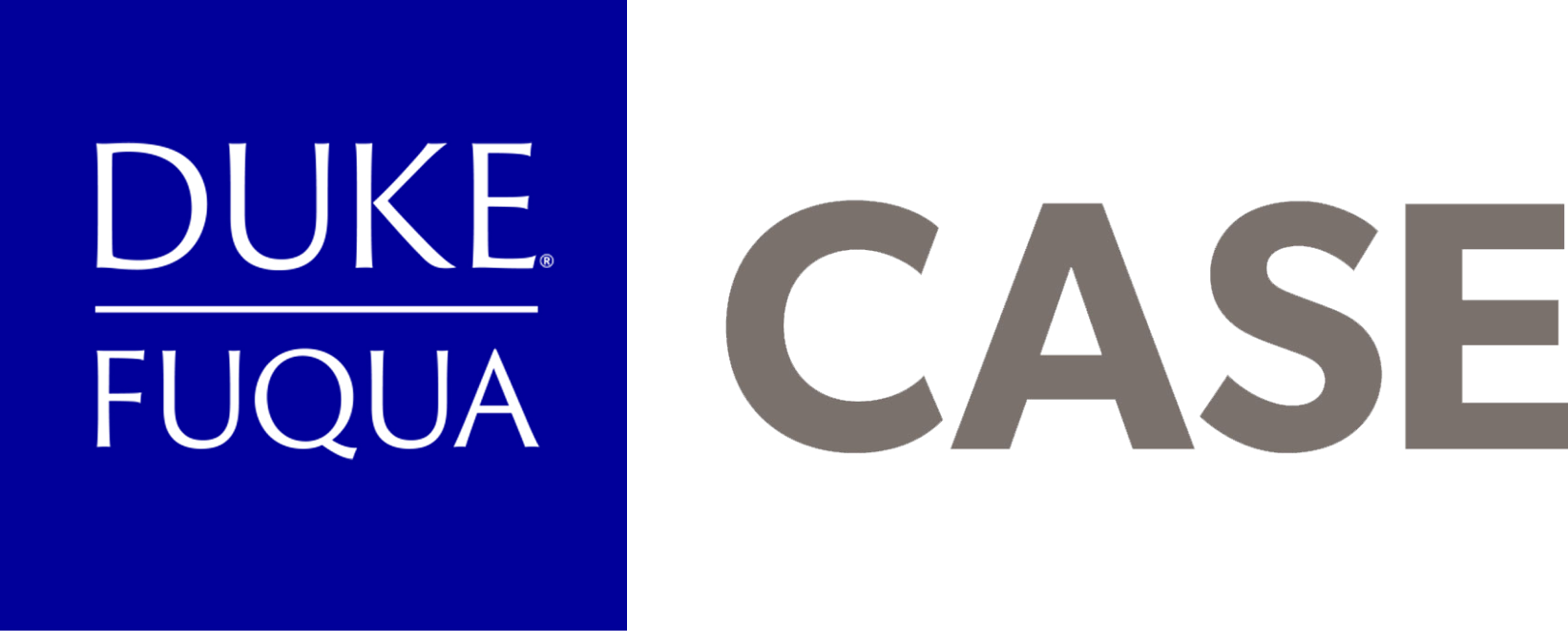While our first-year MBAs are drinking from the fire hose their first few months at Fuqua, we still find ways to engage them in timely topics and discussions across the impact economy – including through our Rising Impact Leader workshop series.
Here we share some of our reflections from a great discussion in October 2024 on ESG and corporate social impact with guest speaker Laura Gitman, Chief Impact Officer at Business for Social Responsibility.
Generally Speaking….
- Letters that mean everything & nothing. ESG’s origins are as a framework for investors to assess companies’ financially material risks related to Environmental, Social, and Governance factors – and therefore the investment performance of the long-term portfolio. While many still use this tool to consider risks and mitigate negative impacts, others have looked to the framework to identify opportunities to drive positive impact on the environmental, social, and governance factors on which long term success also depends. These different approaches, and the ways in which ESG is often used interchangeably with sustainability, corporate social responsibility, and other terms, has led to confusion about what it is, and what it is not.
- What is the S in ESG: Issues? Stakeholders? The S can be organized into issue areas, such as human rights, working conditions, community engagement, DEI, etc. Or, the S can be organized by the stakeholder groups impacted by a business, such as employees, consumers, community, and people within the supply chain. The Principles for Responsible Investment bases its S work on human rights standards, with a focus on decent work and DEI specifically.
- The mega-complexity of managing S. While Environmental factors have benefited from clear, quantitative targets, such as reducing GHG emissions, many Social factors have lacked a consensus-driven “north star,” and are inherently more challenging to define and quantify – making them riskier for investors and businesses.
Human Rights as an S Issue
- The regulatory influence of Europe & California. The past year has seen a shift from voluntary to mandatory standards around human rights, with the EU activating its Corporate Sustainability Due Diligence Directive (EU CSDDD) in July 2024. Among other things, the EU CSDDD requires companies to understand, report, and take action related to their impacts on human rights, within their own operations and also across their supply chain, distribution channels, etc. While the U.S. government has been slow to enact human rights-related regulations, individual states have taken regulatory actions (e.g., California’s Supply Chain Transparency Act). The combination of California’s regulations and those of the EU have moved many U.S. companies to comply with those requirements so that they can continue doing business in those key markets.
- Things might “appear worse” at first (but they were always there). When you take a more comprehensive approach to identifying and counting risks, it can look like your risks are increasing dramatically … when in reality they were there all along but just not recognized as such. Businesses fear seeing these “apparent increases” as they comply with new regulations around identifying human rights risks, but it’s an important step in the right direction.
- Surprises and unintended consequences: Our students were surprised to hear that the oil & gas industry is ahead of many others in establishing practices around human rights; but given the long-term investments that this industry has made in regions with complicated human rights issues, many have invested in understanding and rolling out policies to address them. Students were also concerned to learn of some of the unintended negative consequences of the new regulatory requirements, such as the demand for data from suppliers limiting the ability of very small suppliers – who may not have robust data collection capacities – from participating in the market. The food and agriculture industries, in particular, are experiencing this challenge, with smallholder farmers and other small suppliers unable to meet the data requirements, and thus being left out.
DEI as an S Issue
- Still doing the work, just more discreetly. We discussed the case of backlash over Target’s LGBTQ+ merchandise during Pride month in 2023, seeing the complexity from the vantage point of multiple stakeholders. Bottom line: given experiences like this, there’s been a quieting across the board on all social issues for businesses. Some are still doing the work, but without the megaphone or press releases.
- Start by just asking the question. Just asking the question, “What might different customers need?” can help businesses catalyze new ideas and opportunities to better serve customers. One company posed this question about their female customers as they were designing products, and realized that their products were likely to pose a security concern for women… something they had not previously considered when envisioning the prototypical customer as male. This insight led to improved product design that significantly changed female customers’ experience.
Careers in Corporate Social Impact
- Understand your personal theory of change. What skills do you want to bring to the table? What change do you want to see – and on what scale? Laura Gitman advised students to articulate their own personal theory of change to help drive decisions about where they best fit into the impact economy.
- Regardless of title, you can create impact. Laura reflected that there’s not one clear path to creating social impact through the corporate sphere, rather the key is to figure out what matters to you and start by embedding impact into that industry or function.
- How do I know if a company is serious about change? Many recruiting companies claim to be serious about ESG, but how can students tell if it’s just lip service or a serious effort? Laura recommended asking about the budget behind impact initiatives and proof of progress on those initiatives as a start.

